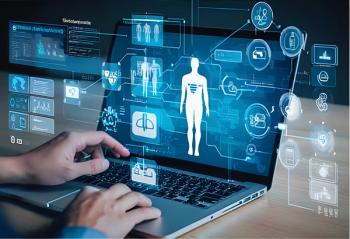
When the EHR Becomes a Handheld Technology
Recently, I downloaded my EHR iPhone app. While the app can provide a level of convenience, it isn’t ready for prime time.
The EHR that I use in the outpatient clinic has just released a version of their software that’s compatible with an iPhone. I have used the hospital EHR on my handheld device in the past and it has not been very functional. Taking a full-screen version of an enterprise-level EHR, and cramming it onto a hand held device or tablet presents challenges at the clinical level.
It was with great anticipation that I downloaded the latest iPhone app for our outpatient EHR that promised to be full-featured and able to document a patient encounter in a similar manner as the iPad and computer-based version. Our software is cloud-based, and we have been using it for over three years now. It is a subscription service that we pay for monthly, depending on the features we want to activate. We are very satisfied with the functionality and sophistication of the EHR. It has gone through many iterations and has continually expanded features.
There have been hiccups (like if their servers go down, we cannot access our patient records), but thankfully, they have been exceedingly rare.
At first look and use of the software, it is obvious that instead of cramming an iPad or computer-based interface onto the iPhone, they have completed redesigned the interface to work on the smaller iPhone. That said, I’m glad that I have an iPhone 6s, and can now see a justification for a larger smartphone to make working with the EHR a little easier.
While I know that this first iteration is just a starting point, there are some features missing that could really enhance the user experience. One is that I’m not able to look back at the patient’s historical documents. A second is that I can’t access ICD-10 codes for charting. The final problem is that I can’t e-prescribe from the new app.
Luckily, their old iPhone companion app allows access to these missing features, except for coding queries. It is just a pain to have to switch between apps for these functions, or switch to my tablet for coding. While I’m very impressed with the thought that went into preparing this app for clinical use, I can’t say that it is ready for primetime, although I do plan to use it for convenience during patient care in the coming weeks and months.
The intersection of medicine and technology is a difficult and challenging phenomenon. Software was written to facilitate data gathering and not patient care, causing significant headaches for providers in outpatient and inpatient settings.
It is so “Dick Tracy” (I know that I’m dating myself….) to be able to chart, and look up diagnostic patient data on my tablet and phone, and find myself still marveling at the capability and potential of our modern data phones and tablets. Software continues to improve, and developers and designers are shifting their focus to needs of the provider in documenting the patient encounter and facilitating patient care.
We have come a long way and we still have a long way to go. However, I can visualize the promise of the EHR, and the functionality of this tool if it can be made to work on our hand held devices. To make these apps more user-friendly, some of these options when scaling EHRs to handheld devices could really enhance provider experience.
• The interface of the EHR needs to be completely redesigned to work on the handheld device, and not scaled down from a desktop version.
• Included elements of the EHR deployed onto a handheld device need to be the most essential, and everything needed to complete an accurate patient note. If any part off this process is missing or weak, the smart phone version of the software will remain a novelty and not useful.
• The ability to look at historical patient information and data is essential to the accurate documentation of the current patient visit.
• Complete coding search and inclusion is essential in this day and age of ICD-10 - with so many codes, being able to easily access them will ensure continued accuracy in documenting.
I look forward to testing and using these handheld technologies in the clinical setting, and I’m convinced now that our lives as providers, and the technologies we use in patient care, will continue to evolve in a good direction. If you have any experiences using EHRs on a handheld device, feel free to share below.
Newsletter
Optimize your practice with the Physicians Practice newsletter, offering management pearls, leadership tips, and business strategies tailored for practice administrators and physicians of any specialty.








